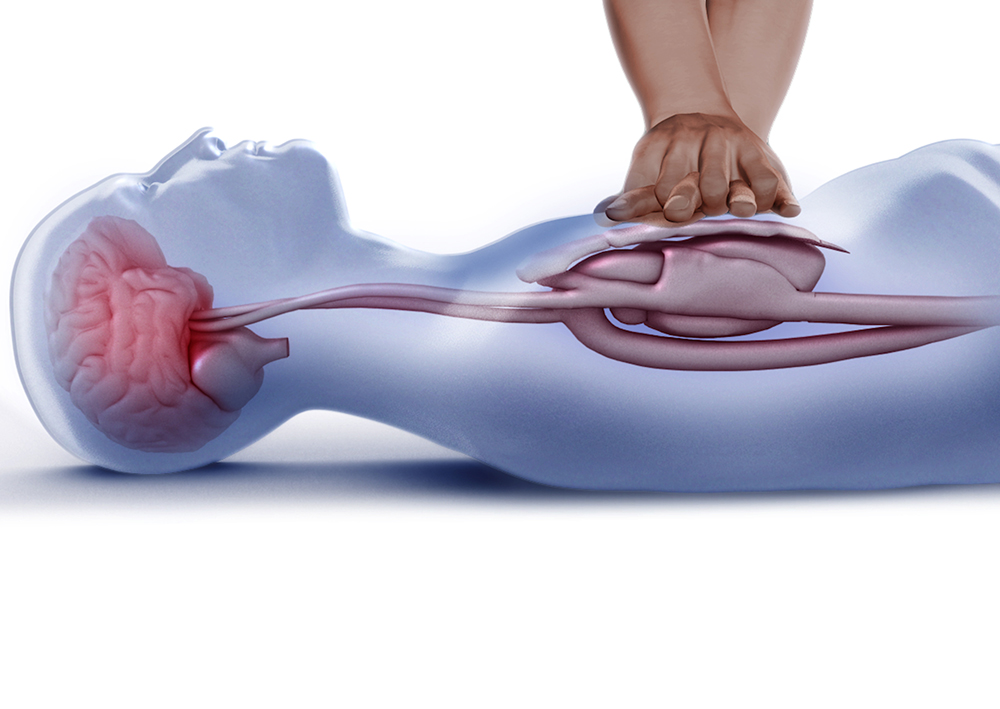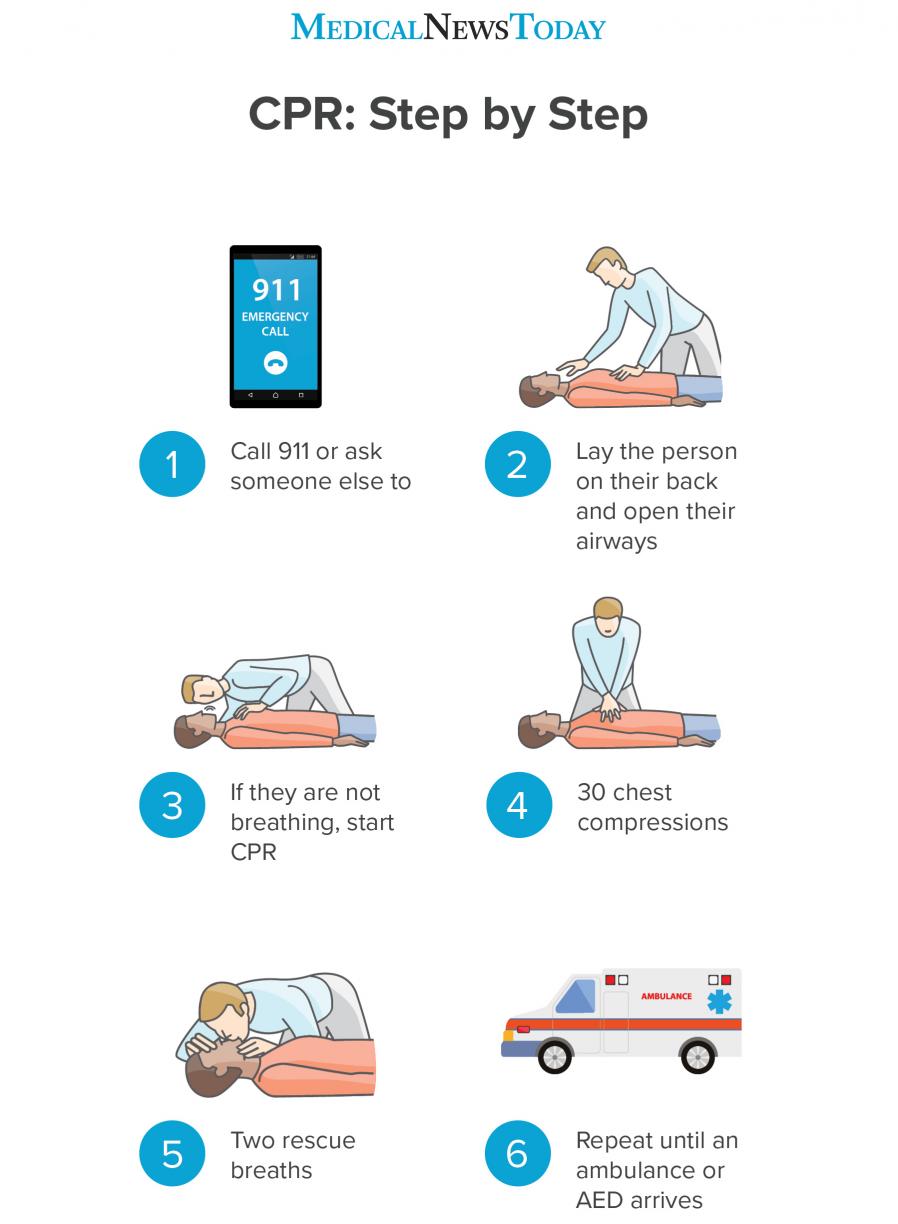Excitement About Emergency Room
Wiki Article
All about Emergency Room
Table of ContentsThe Single Strategy To Use For Walk In ClinicSome Known Incorrect Statements About Walk In Clinic The 10-Minute Rule for Walk In ClinicGetting The Clinic Near Me To WorkOur Urgent Care Near Me Ideas
Check to see if the individual is conscious and also breathing usually. Action 2. If not, scream for help. Step 3. A single person calls 911 and then gets an AED, while the other person looks for no breathing or wheezing and (at the same time) checks for a guaranteed pulse WITHIN 10 SECS.Recheck the pulse every 2 minutes. 3d. If no pulse or normal breathing, begin mouth-to-mouth resuscitation. The first rescuer performs cycles of 30 compressions and 2 breaths. When the second rescuer returns, the 2 perform cycles of 15 compressions and 2 breaths. Make use of the AED as quickly as it is available.
Unlike BLS, chums commonly includes a coordinated group of skilled responders who are able to launch several processes simultaneously. VF or p, VT The following summarizes the AHA PALS formula for VF or p, VT [49]: Call for aid and trigger the emergency situation response Initiate premium mouth-to-mouth resuscitation and provide oxygen Attach an ECG screen as well as defibrillator pads Establish vascular gain access to; originally, trying outer IV gain access to serves yet just for a short, minimal time; if a peripheral IV accessibility can not be swiftly developed, then an IO line should be put by a qualified provider Once the child is attached to the monitor or AED, the rhythm ought to be examined and also determined to be shockable or nonshockable.
Tachyarrhythmia The most typical sorts of tachycardia in the pediatric populace are sinus tachycardia, supraventricular tachycardia, and also ventricular tachycardia. Similar to other aspects of chums, an algorithmic approach is used for tachyarrhythmia, as detailed listed below. If a pediatric client is found to be less competent as well as not breathing in the context of tachycardia on the monitor, then continue to the pulseless arrest formula.
Some Known Questions About Clinic Near Me.
Respiratory system as well as cardiac arrest can be triggered by sensitive reactions, an inadequate heart beat, asphyxiation, breathing passages that are obstructed, choking, drowning, medication reactions or overdoses, electrical shock, exposure to chilly, severe shock, or injury. Mouth-to-mouth resuscitation can be performed by skilled bystanders or medical care professionals on babies, youngsters, and grownups. It needs to always be carried out by the person on the scene who is most experienced in CPR.Precautions, mouth-to-mouth resuscitation should never ever be done on a healthy person since it can cause severe injury to a beating heart by disrupting regular heartbeats.To give oxygen to an individual's lungs, the rescuer provides mouth-to-mouth breaths, then aids distribute blood via the heart to crucial organs by outside upper body compressions. Mouth-to-mouth breathing as well as external breast compression must be carried out with each other, however if the rescuer is not solid sufficient to do both, the outside upper body compressions must be done. urgent care.
Many CPR attempts are not inevitably successful in recovering a person to a good top quality of life. urgent care hours. Mouth-to-mouth resuscitation is consequently not typically suggested for the persistantly or terminally unwell or sickly elderly.
A hand-held device called a CPR Prompt is offered to stroll individuals trained in mouth-to-mouth resuscitation via the procedure, utilizing American Heart Organization guidelines. CPR has actually been exercised for more than 40 years. The basic treatment for mouth-to-mouth resuscitation is the very same for all people, with a few adjustments for infants and kids to represent their smaller size.
The 4-Minute Rule for Urgent Care
The rescuer escape for a moment and after that repeats. The individual's head is repositioned after each mouth-to-mouth breath. After two breaths, the rescuer checks the subconscious individual's pulse by moving the hand that was under the individual's chin to the artery in the neck (carotid artery). If the subconscious individual has a heartbeat, the rescuer continues rescue breathing up until assistance gets here or the person starts taking a breath without help.If there is no heartbeat, the rescuer does chest compressions. The rescuer kneels beside the subconscious individual, putting the heel of one hand in the area on the reduced chest where both fifty percents of the chest come with each other. The rescuer puts one hand on top of the other on the individual's chest as well as interlaces the fingers.
The hands are weighed down, making use of only the palms, so that the person's breastbone sinks in regarding 1 1/2 -2 inches. The rescuer releases pressure without removing the hands, then repeats about 15 times per 10-15 second intervals. The rescuer tilts the unconscious person's head and also go back to rescue breathing for one or 2 fast breaths.
If the rescuer locates indications of a heart beat as well as breathing, CPR is stopped. If the unconscious person is taking a breath however has no pulse, the breast compressions are continued. If the unconscious person has a pulse but is not breathing, rescue breathing is continued. For kids over the age of eight, the rescuer does mouth-to-mouth resuscitation exactly as for an adult.
Urgent Care Near Me for Beginners


The breastbone is depressed just 1-1 1/2 inch for a kid and 1/2 -1 inch for a baby, the rescuer provides a minimum of 100 click for source chest compressions per minute. Some brand-new methods of performing mouth-to-mouth resuscitation have been attempted. Energetic compression-decompression resuscitation, abdominal compression carried out in between breast compressions, and also chest compression utilizing a pneumatically-driven vest have actually all been tested but none are presently advised for routine use.
Interposed stomach counterpulsation, which requires two or more rescuers, one compressing the breast and also the various other pressing the abdomen, was developed to boost stress and as a result blood circulation. It has actually been shown in a small research study urgent care cost to enhance survival however even more information is required. A pneumatically-driven vest, which circles the upper body of an unconscious person and compresses it, enhances pressure within the upper body during outside upper body compression.
If no signs of breathing exist after three to five secs, mouth-to-mouth resuscitation must be begun. Aftercare, Emergency treatment is constantly required after effective CPR. When an individual's breathing and also heartbeat have been brought back, the rescuer should make the person comfy as well as stay there until emergency situation medical employees arrive.
The Main Principles Of Emergency Room
Dangers, CPR can trigger injury to an individual's ribs, liver, lungs, and also heart. These risks need to be accepted if Mouth-to-mouth resuscitation is required to save the individual's life. Regular results, In lots of instances, successful CPR leads to repair of consciousness and also life. Barring other injuries, a revitalized person normally goes back to typical features within a couple of hrs of being restored.
Report this wiki page